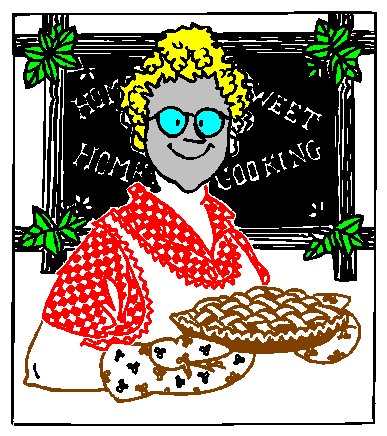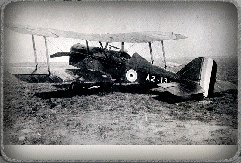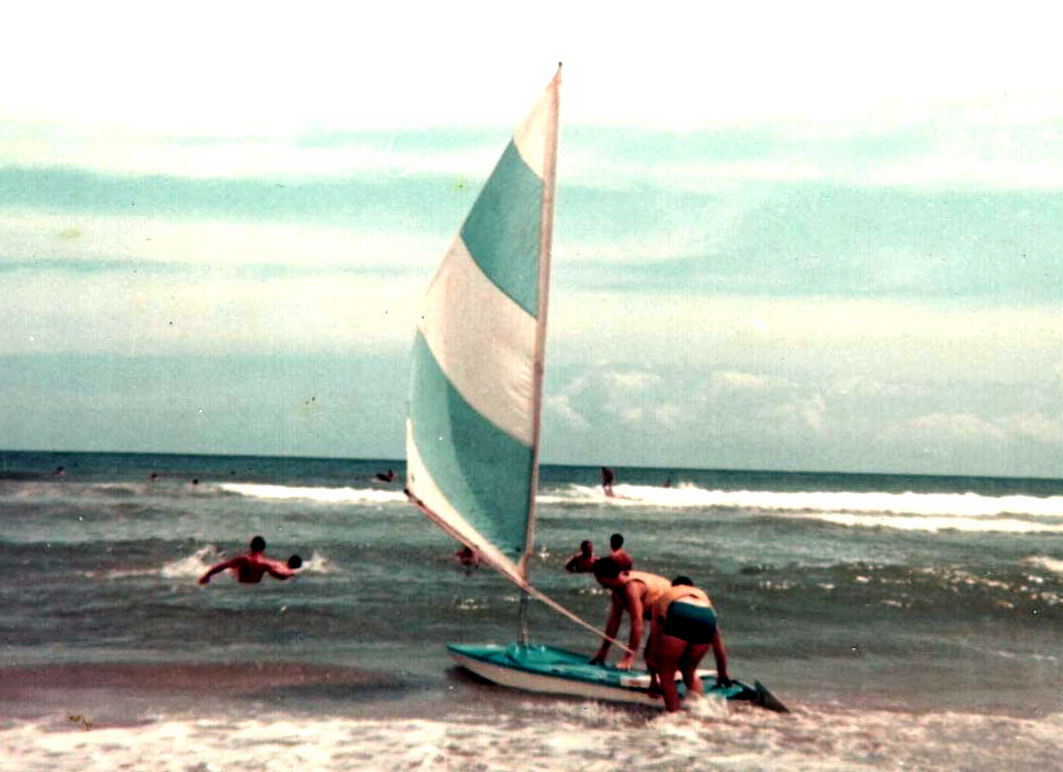|
|
||
|
|
Radschool Newsletter |
Vol 6 Page 6 |
|
|
||
|
Pizzas and Stuff.
Aunty Freda. |
||
|
We hope you enjoyed your bar-b-q pizza from last issue. This time we’re going to make everyone’s favourite, the Supreme. Once again, all the flavour is in the sauce, get that right and you’ve got a great pizza. Fortunately, this time there is a sauce already made, we don’t have to make our own, though, it is a little hard to get. The one I recommend is Raguletto Professional Primavera sauce, which is a blend of tomatoes, mushrooms, zucchini and capsicum.
Prepare the pizza base the same way as we did when making the bar-b-q pizza. Spread about 2-3 tablespoons of sauce over the pizza base, then lightly sprinkle a layer of cheese over the sauce.
Next add the bacon, the green capsicum, onion rings, salami, red capsicum, mushroom, peperoni, black olives, jalapeno, spreading the ingredients evenly over the base. Then top the lot with about 1½ handfuls of cheese, remembering not to use too much as it acts as an insulator and stops the ingredients underneath it from cooking.
Pop the lot into a pre-heated oven at 2000C for about 10-12 minutes, or until the cheese has melted and the base has gone a golden brown, and voilà—a perfect Pizza Supreme.
Savoury mince.
This is a very tasty dish which is very easy to make. You’ll need:-
Brown the mince and the onion in a large pan. Add all the other ingredients, bring to the boil, simmer uncovered for about 20 minutes—stirring often. While the mince is cooking, boil the Penne (or your substituted pasta) in salted water for about 15 minutes, then strain it immediately.
Place the required amount of pasta into a deep serving plate, top with the mince, and (if desired) top with grated parmesan cheese. Serve with thick fresh “buttered” bread.
Delicious!
|
||
|
Two small boys were in their bedroom one night. The 10 year old said to his 6 year old brother: “Bobby, I think it’s time we started to swear, when we go down to breakfast tomorrow let’s start”. “Ok Johnny” said his younger brother. Next morning they were at the table and their mum asked Johnny what he’d like for breakfast. “Damned if I know” he said, “I think I’ll have those bloody Coco Pops”. Whack!, and young Johnny goes spinning across the floor, gets up crying, and runs off to his bed room. “Now young man” his mum said sternly to Bobby, “what will you have for breakfast”. “Shit!” said Bobby, “I dunno mum, but I’m damn sure I’m not having those bloody Coco Pops.” |
||
|
|
||
|
The formation of the RAAF.
The Royal Australian Air Force has an unusually long history. It is one of the world's oldest independent air forces, having been established in 1921, three years after the first, the RAF.
Military aviation first took to the wing in Australia when Central Flying School was formed at Point Cook in 1912, only nine years after the Wrights made the first successful controlled, powered flight at Kitty Hawk. Central Flying School grew quickly into the Australian Flying Corps. Two years later, in 1914, Australian pilots were dispatched on active service to New Guinea to help seize German colonies. One year after that, the Australian Flying Corps was fighting in Mesopotamia (Iraq); and by the end of World War 1, four Australian squadrons were in action on the Western Front in France.
The RAAF’s first front line fighter aircraft, the 132MPH SE5A which entered service with the AFC as No 2 Sqn in 1917. One of these aircraft can be seen today at the Aust War Memorial. It was partly because of the manifest potential of air power that the RAAF was established as an independent service in 1921. Nevertheless the period between the 1st and 2nd world wars was a difficult one for Australia's airmen. Australia's first Chief of the Air Staff, Wng Cdr (later Air Marshal Sir) Richard Williams found himself repeatedly under attack from his army and navy counterparts who persistently argued there was no place for independent air power, that air forces would always exist only to support armies and navies.
The RAAF entered WWII on 3 Sept 1939 and for the two years before Pearl Harbour sent thousands of young men to fight against the Axis powers in Europe, either in Australian squadrons or with the RAF. Following the Japanese attacks on Pearl Harbour, Malaya and the Philippines, the RAAF's attention tended to shift to the war in the Southwest Pacific, especially as during the first half of 1942, Japanese invasion of Australia seemed probable. It is not widely known that the Australian mainland was bombed more than 60 times by Japanese aircraft.
One of the major factors in reversing the Japanese advance through SE Asia was the alliance formed between American, Australian, New Zealand and Dutch forces. Probably the most notable action from an Australian perspective was the Battle of the Bismarck Sea, fought over 50 years ago on 2-4 Mar 1943. In a brilliantly conceived and executed operation, US and Australian aircraft destroyed 12 of the 16 ships of a Japanese convoy attempting a major reinforcement of New Guinea. That victory removed forever any likelihood that Japan would be able to regain the initiative in New Guinea, and so again threaten Australia.
At the start of WWII, the RAAF consisted of about 3,000 personnel and 300 aircraft. By 1945 it had grown 50-fold, to a force of over 180,000 personnel operating more than 3,000 aircraft (imagine being part of that Air Force!). By 1948, however, its personnel numbered only 8,000. During the Korean conflict it was the RAAF's P-51 Mustangs from 77 Sqn (which had been on duty in Japan) which initially provided much of the close air support for the beleaguered UN ground forces. Later re-equipped with the British-made Gloster Meteor jet fighter, 77 Sqn continued to operate in Korea as part of the U.S. Fifth Air Force. In the same month that the fighting in Korea started, RAAF Lincoln bombers and DC-3 transports had begun active service with British Commonwealth forces in Malaya, in a war which was to last 12 years. The RAAF also contributed a fighter wing to a British Commonwealth garrison in the Middle East, based in Malta, from 1952 to 1954.
The RAAF hard at war in Vietnam. Col Knudson (Caribou loady) taking it easy at Back Beach in December, 1969. (What did you do in the war daddy??)
Then came the Vietnam War, where the RAAF supported the U.S. effort from 1964 to 1972. RAAF Canberra bombers and Caribou transports contributed to the overall air effort, while Iroquois helicopters operated in support of an Australian Army task force. Neptune reconnaissance aircraft and C130 transports also participated in the war.
In addition to those flying units, a significant number of RAAF personnel served with USAF squadrons during the war, including F4 Phantom strike/reconnaissance pilots, Forward Air Control pilots, photographic interpreters and intelligence officers. While RAAF aircraft did not participate directly in the 1991 Gulf War, support was provided by intelligence officers, linguists and a medical team. A small number of aircrew saw active service with USAF, RAF and Royal Navy squadrons.
Since then, the RAAF has been involved in numerous peacekeeping and other humanitarian operations including Somalia, Rwanda, Cambodia, Bougainville, Irian Jaya and Papua New Guinea.
RAAF Boeing 707 tankers also provided airborne refuelling for US and British aircraft monitoring the "no-fly" zone in southern Iraq in the early months of 1998. |
||
|
|
||
|
|
||
|
|
||

 This
sauce is made for the professional caterer, and is not available to
the general public. You can’t buy it at your local supermarket
(don’t know why not) so you have to get it from places like
Campbell’s Cash and Carry, David’s Wholesalers, John L Lewis etc—but
it’s definitely worth the effort. Apart from being a very good pizza
sauce, it is fantastic as an ingredient in savoury mince dishes (see
recipe later) or as a straight pasta sauce or it can be used in
lasagne. Once you’ve tried it you’ll find you’ll always have a
bottle or two in the pantry. If you just can’t get it, try
Raguletto’s Napolitana tomato, onion and garlic pasta sauce—you can
buy that from any supermarket, and it’s second best. But back to the
pizza. For the supreme you’ll need the following:-
This
sauce is made for the professional caterer, and is not available to
the general public. You can’t buy it at your local supermarket
(don’t know why not) so you have to get it from places like
Campbell’s Cash and Carry, David’s Wholesalers, John L Lewis etc—but
it’s definitely worth the effort. Apart from being a very good pizza
sauce, it is fantastic as an ingredient in savoury mince dishes (see
recipe later) or as a straight pasta sauce or it can be used in
lasagne. Once you’ve tried it you’ll find you’ll always have a
bottle or two in the pantry. If you just can’t get it, try
Raguletto’s Napolitana tomato, onion and garlic pasta sauce—you can
buy that from any supermarket, and it’s second best. But back to the
pizza. For the supreme you’ll need the following:- While
officially the Australian Flying Corps' main role was army
co-operation, its squadrons inevitably became involved in air to air
combat and bombing attacks as the full potential of the air weapon
became apparent. Australian fighter pilot A.H. Cobby, for example,
was credited with 29 kills, making him one of WW1's leading aces.
While
officially the Australian Flying Corps' main role was army
co-operation, its squadrons inevitably became involved in air to air
combat and bombing attacks as the full potential of the air weapon
became apparent. Australian fighter pilot A.H. Cobby, for example,
was credited with 29 kills, making him one of WW1's leading aces.